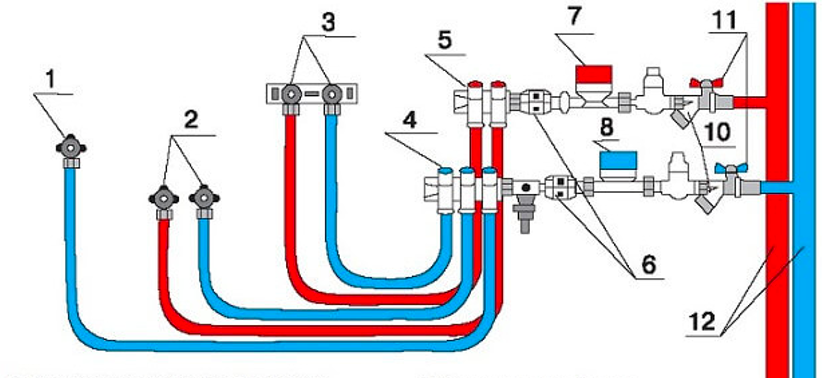If in simple words, what is a gas tank for a private house, it can be defined as a metal container with sensors and an outlet pipe through which liquefied gas enters the house. The capacity is designed for several thousand liters, so this volume is enough even for heating and hot water supply of large premises for 4-12 months. A description of the device, the cost of an approximate installation, as well as the pros and cons can be found below.
The content of the article
- The device, the volume of the gas tank and the composition of the gas mixture.
- The composition of the gas mixture and the cost of heating
- Installation Requirements
- Pros and cons of a gas tank
The device, the volume of the gas tank and the composition of the gas mixture.
Studying the gas tank, the pros and cons of the unit, you should first familiarize yourself with the features of the device. In fact, this is a large metal container for several thousand liters, which is installed on the street. The tank is used to store gas, in case the fuel is pressurized on release and becomes liquefied. Thanks to this, the stock is enough for at least several months.
The most important characteristic of the container is its volume, which determines how often the gas tank is filled. Since the depth and width are usually standard, they are determined by the tank length parameter:
- 5 m - 4850 l of gas;
- 7 m - 6400 l;
- 10 m - 9200 l.
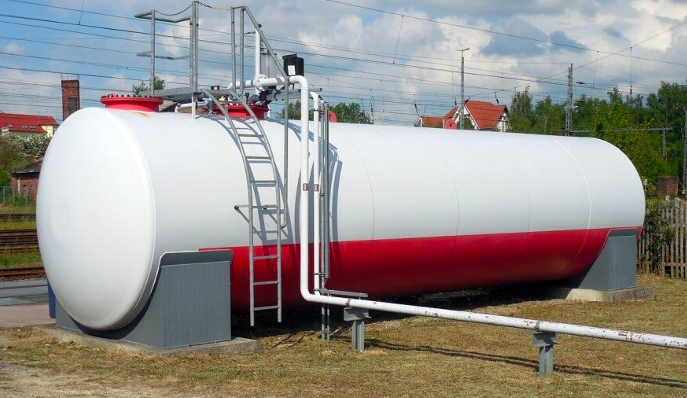
To the tank is like a supply tube, which goes into the house. Therefore, the gas holder is used for heating, as well as hot water supply, not only in the cold season, but also in the warm season. The unit emits several sensors that automatically control the pressure and, in the event of a violation, immediately shut off the fuel supply in order to avoid emergency situations.
It was the volume of the gas tank that determined its main advantage. Even if you put a small tank 5 m long, this is enough to hold almost 5000 liters of liquefied gas. On average, the need to meet the needs of a private house requires this within a few months. Refueling is carried out from 1 to 3 times a year, which is much more profitable compared to conventional gas cylinders.
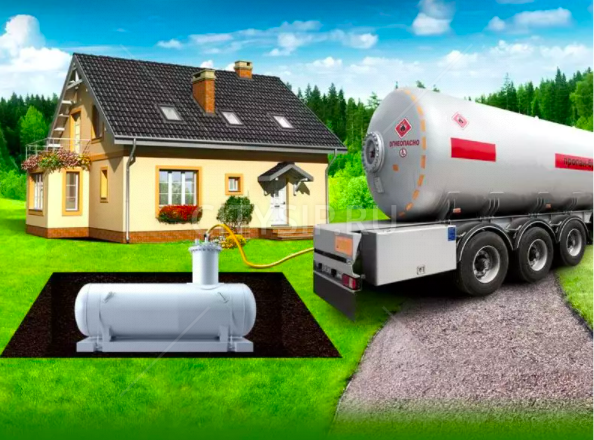
The composition of the gas mixture and the cost of heating
In most cases, butane or propane is poured into the tank, depending on the season, the composition of the mixture:
- summer option - butane, which begins to freeze faster compared to propane;
- Winter mixture - propane: it is more expensive, but it provides effective heating even in winter frosts.
Theoretically, the tank can be filled with methane, but its ability to liquefy is much lower. Therefore, this option will cost more, and, as an example, it is used very rarely.
If you choose the right composition of the gas mixture, the cost of heating with a gas tank per month will significantly decrease. She determined the area of \u200b\u200bthe house and calculated the expense. If we take the average values as a basis, we get the following picture:
- an area of 100 m2 - a monthly expense of about 4000 rubles;
- 150-200 m2 - 5500-7000 rubles;
- 300-350 m2 - 11000 rubles;
- 450 m2 - 14000 rubles
Thus, even for a fairly large house with an area of 150-200 m2, payment per year will be about 72-80 thousand rubles. Further, we are talking about the provision of not only heating, but also hot water. When compared with gas cylinders, electricity, coal, wood and other fuel sources, this method looks more economical. Therefore, there is no doubt whether it is profitable or not to install a gas tank.
Installation Requirements
Having dealt with the topic of what kind of gas is in the gas tank, you must also familiarize yourself with the requirements for installing the system:
- the distance from the tanks to the residential building (both one’s own and the neighbor’s) must be at least 10 m;
- from outbuildings - from 2 m;
- the surface should be flat, the site should be open (without trees, vertical structures, bushes);
- access to the device must be unhindered both for periodic refueling and for repair work;
- when installing above ground, it is necessary to insulate the tank, as well as finish it with protective materials so that the surface does not overheat in the sun;
- the tank is placed in a pit, the depth of which should be from 1.9 m, and the width should be about the same - from 2 m;
- places are placed strictly parallel to each other;
- it is installed on the slab, fixed directly on the supports with anchor bolts or with the help of cables;
- The valve must be located above the groundwater level to prevent moisture from entering.
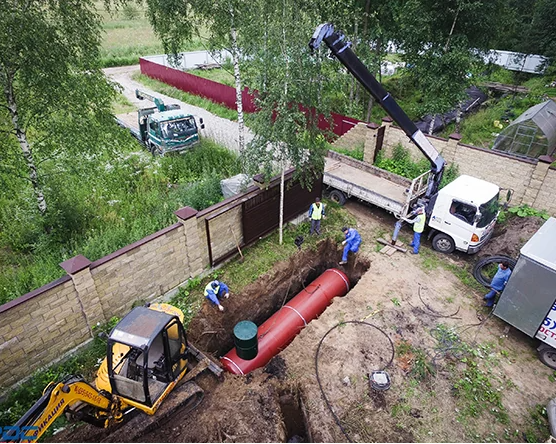
Pros and cons of a gas tank
Even if you choose the volume of a gas tank for a country house for 4850 liters of gas, you can take advantage of all the advantages of such a unit:
- Full autonomy - the presence of its own tank Allows not to provide protection from the central gas pipeline. This is especially true for villages, since the level of gasification in Russia is not yet 60% and can greatly increase depending on the specific region.
- Automation perfectly controls the flow rate, pressure and other parameters, which is practically allows you to prevent emergency situations (with strong refueling and timely maintenance equipment).
- The consumption of a gas tank for private houses is small, since the fuel is liquefied. Therefore, it is a more profitable option compared to other energy sources such as diesel or electricity.
- The device also serves approximately 25-50 years.
- The capacity of the gas tank is for a private large house, so it needs to be filled only 1-3 times a year.
- The gas itself is an environmentally friendly fuel, the combustion of which uses only water and carbon dioxide, which is safe for health and the environment.
- There is no noise, foreign smell and soot. Therefore, maintaining the system is quite simple.
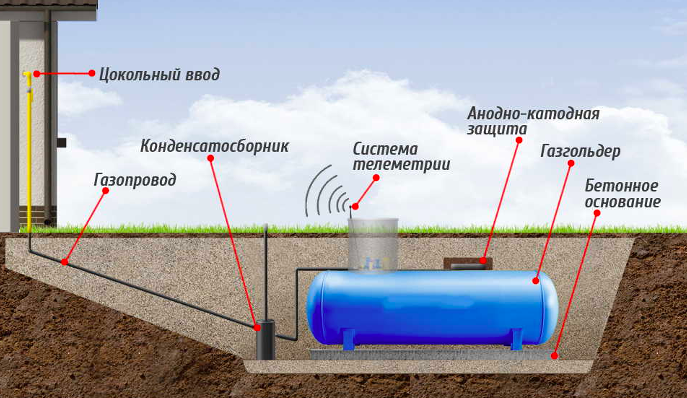
But there are also disadvantages:
- The installation is very expensive (average 150-250 thousand rubles). rubles) and is performed only by specialists whose services also need to be paid. When evaluating costs, you should definitely change the cost of annual maintenance.
- Not all sites meet the requirements of the policy for the installation of tanks.
- If you place the container on the ground, it is necessary to equip it with heating, for example, electric heaters, which will also increase costs.
Thus, the installation costs of the unit are quite high. But if you consider that it is done at several levels, the investment will definitely pay off over time. In addition, if gasification in the countryside is not considered in the foreseeable future, it is a private gas tank that will be the best way to solve the problem.


